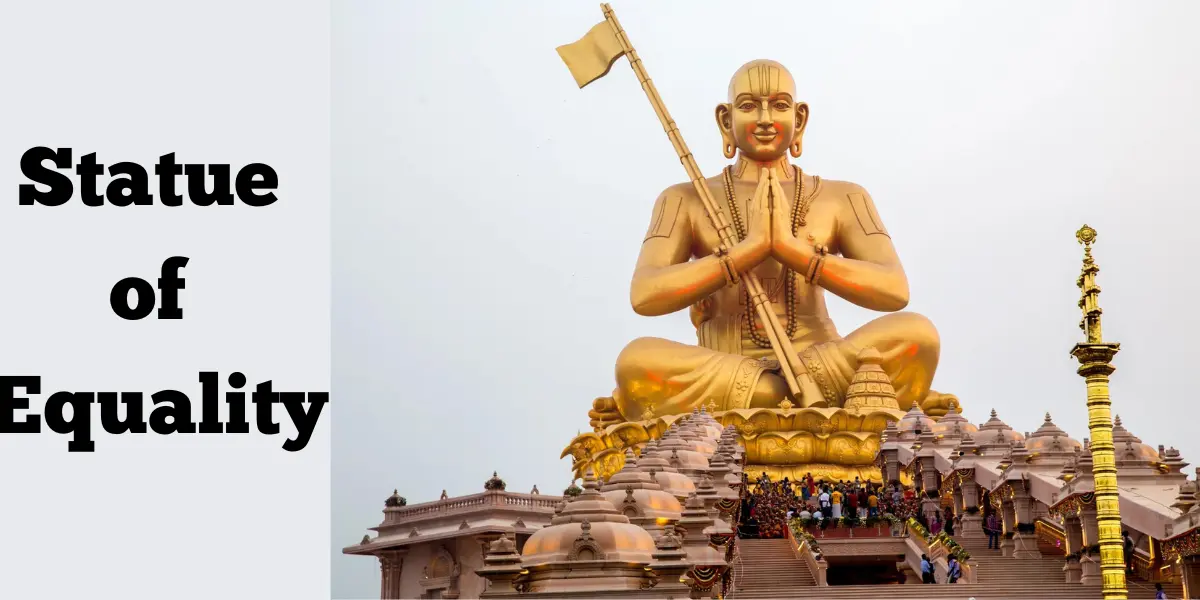The Statue of Equality stands as a monumental symbol of justice, inclusivity, and human dignity. Located in Hyderabad, India, this towering statue is not just a tribute to the values it represents but also a modern marvel of architecture and engineering. As one of the most significant statues in the world, it attracts thousands of visitors annually, making it a must-see destination. Before you plan your visit in 2024, here’s everything you need to know about the Statue of Equality, including its history, significance, and practical tips for an unforgettable experience.
The Historical Significance of the Statue of Equality
The Statue of Equality, also known as the Ramanuja Statue, is dedicated to the revered 11th-century Indian philosopher and theologian, Sri Ramanujacharya. He was a leading proponent of the Vishishtadvaita school of Vedanta and is remembered for his teachings on the oneness of all souls and the universal equality of all beings. His contributions to Indian philosophy and his emphasis on social equality continue to resonate even today.
The statue was inaugurated in 2022, marking the 1000th birth anniversary of Sri Ramanujacharya. Standing at a staggering height of 216 feet, the statue is one of the tallest sitting statues in the world. The project was initiated by Chinna Jeeyar Swamiji, a prominent spiritual leader, and was constructed to spread the timeless message of equality, love, and respect for all.
Architectural Marvel and Design Details
The Statue of Equality is not only significant for its spiritual and philosophical implications but also for its extraordinary architectural design. The statue is made of panchaloha, a combination of five metals—gold, silver, copper, brass, and zinc—symbolizing the unity of various elements of nature. The statue sits on a 54-foot-high base building, known as the Bhadravedi, which houses a meditation hall, a digital library, and an exhibition gallery dedicated to the life and teachings of Sri Ramanujacharya.
The design of the statue meticulously incorporates traditional Indian art and modern engineering techniques. The intricate carvings on the base and the lifelike depiction of Ramanujacharya in a meditative pose make it a stunning visual masterpiece. The statue is surrounded by 108 Divya Desams (sacred shrines), each representing a temple dedicated to Lord Vishnu, further enhancing the spiritual ambiance of the site.
Visiting the Statue of Equality: Practical Information
Location and How to Get There
The Statue of Equality is located in the village of Muchintal, which is about 30 kilometers from the city of Hyderabad in the Indian state of Telangana. The nearest airport is the Rajiv Gandhi International Airport, which is approximately 20 kilometers away from the site. From the airport, you can hire a taxi or use public transport to reach the statue. If you are traveling by train, the nearest railway station is Shamshabad Railway Station, from where you can take a cab or an auto-rickshaw to the statue.
Best Time to Visit
The best time to visit the Statue of Equality is during the winter months, from November to February when the weather in Hyderabad is cool and pleasant. The summer months can be quite hot, with temperatures soaring above 40°C, making it less comfortable for outdoor activities. The statue is open to visitors throughout the year, but planning your visit during the early morning or late afternoon hours is advisable to avoid the midday heat.
Entry Fees and Timings
Entry to the Statue of Equality complex is free of charge, but donations are welcomed and encouraged to support the maintenance and ongoing activities at the site. The complex is open from 7:00 AM to 8:00 PM every day. Guided tours are available and can provide a deeper understanding of the statue’s significance and the life of Sri Ramanujacharya.
What to Expect During Your Visit
Upon entering the complex, you will be greeted by a serene atmosphere and the sight of the towering statue in the distance. As you walk through the beautifully landscaped gardens, you can explore the various shrines and take in the spiritual energy of the place. The meditation hall inside the Bhadravedi offers a tranquil space for reflection and inner peace. Don’t miss the exhibition gallery, where you can learn more about Sri Ramanujacharya’s life and his teachings on equality and universal brotherhood.
Photography is allowed within the complex, so be sure to capture the stunning views of the statue and its surroundings. The statue is illuminated in the evening, offering a spectacular sight that you won’t want to miss.
Nearby Attractions
While visiting the Statue of Equality, there are several other attractions nearby that you can explore:
- Ramoji Film City: Just a short drive from the statue, Ramoji Film City is one of the largest film studios in the world. It offers a variety of attractions, including film sets, amusement parks, and live shows, making it a fun destination for families and film enthusiasts.
- Charminar: Located in the heart of Hyderabad, the Charminar is an iconic monument and a symbol of the city’s rich history. It is surrounded by bustling markets where you can shop for traditional Hyderabadi bangles, pearls, and other souvenirs.
- Golconda Fort: Another historical site worth visiting is the Golconda Fort, a magnificent fortress with a rich history dating back to the 12th century. The fort offers panoramic views of the city and is a great place for history buffs and photography enthusiasts.
Conclusion
The Statue of Equality is more than just a tourist attraction; it is a place of profound spiritual significance and a symbol of the timeless values of equality, justice, and universal brotherhood. Whether you are a spiritual seeker, a history enthusiast, or simply someone looking to experience the grandeur of one of the world’s tallest statues, the Statue of Equality offers an enriching and memorable experience.
Read More About: Pokemon Legends ZA: Everything You Need To Know



